Cuba Becoming in the American Eye
Somewhere between the 1950’s and the emerging cacophony of American tourism there is the suspended vintage charm of Cuba; a world apart from anything fast, electronic and American. There are reasons why—rooted in a vastly different political and social way of being. Cuba is and has long-been an island unto it’s own; and this is precisely what mystifies and intrigues the American traveler.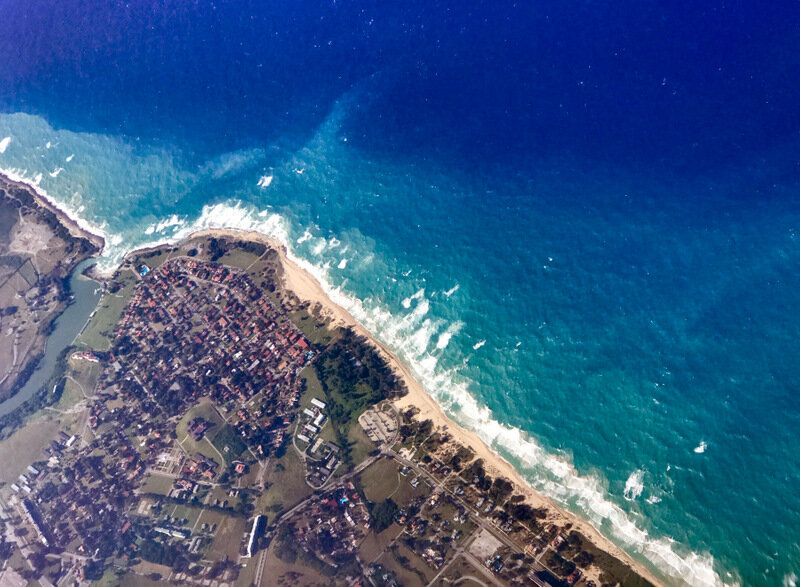 While current travel bloggers and magazine headlines keep urging a hurry-up-see-it-now before the imminent outside transforms the local vibe forever, I reject the assertion that now that the borders are open to the world that change is imminent. Don’t get me wrong, the times they are a changing for sure, but Cuba has been open to the world. More aptly is now that the borders are open to the U.S of A, Cuba will be changed—and not necessarily for the better.
While current travel bloggers and magazine headlines keep urging a hurry-up-see-it-now before the imminent outside transforms the local vibe forever, I reject the assertion that now that the borders are open to the world that change is imminent. Don’t get me wrong, the times they are a changing for sure, but Cuba has been open to the world. More aptly is now that the borders are open to the U.S of A, Cuba will be changed—and not necessarily for the better.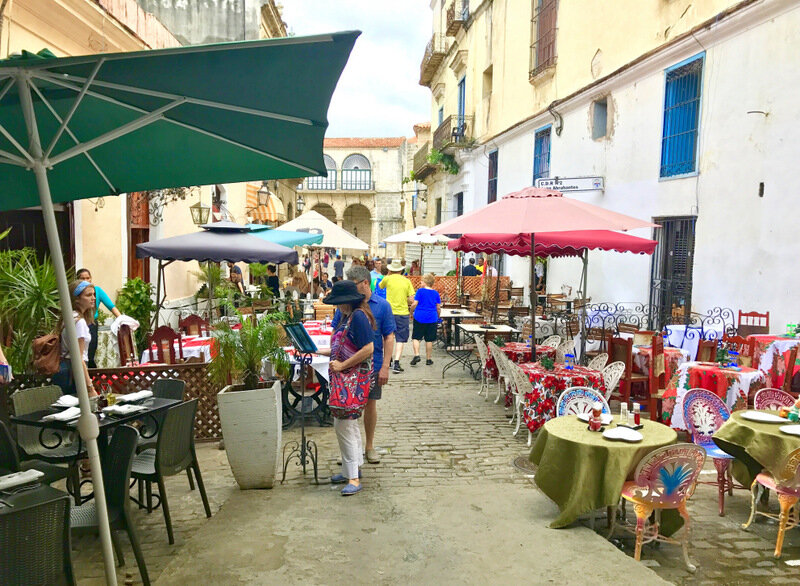 Cuba’s (until recently) forbidden and seemingly exotic other-world-ness has been in the American gaze for plenty of decades. As a half-breed Floridian, having spent my childhood lolling around the Bahamas and Florida Keys home-schooled on a boat just hitherto those Cuban waters, it was a culture that invoked curiosity for me into my adulthood. I studied Afro-Cuban percussion techniques in my twenties and yearned to sit in cigar smoke-infused bars just to be in the presence of the real deal musicians.
Cuba’s (until recently) forbidden and seemingly exotic other-world-ness has been in the American gaze for plenty of decades. As a half-breed Floridian, having spent my childhood lolling around the Bahamas and Florida Keys home-schooled on a boat just hitherto those Cuban waters, it was a culture that invoked curiosity for me into my adulthood. I studied Afro-Cuban percussion techniques in my twenties and yearned to sit in cigar smoke-infused bars just to be in the presence of the real deal musicians.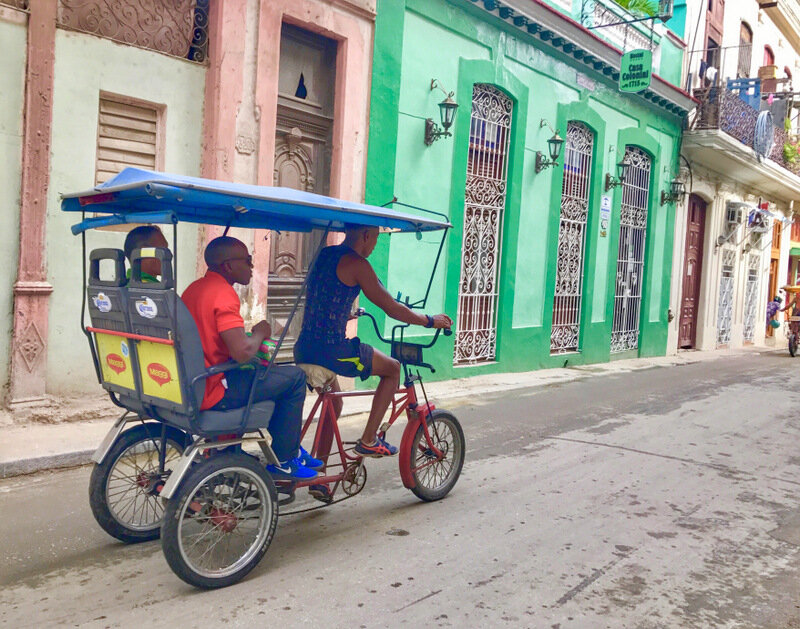 I knew I’d get there sometime and I wasn’t afraid to go through Canada or Mexico, I just didn’t want to be forced to join some canned tour group, which is what I had been told was the only way to go. I love Canadians, but even a structured Canadian tour still wasn’t my bag.
I knew I’d get there sometime and I wasn’t afraid to go through Canada or Mexico, I just didn’t want to be forced to join some canned tour group, which is what I had been told was the only way to go. I love Canadians, but even a structured Canadian tour still wasn’t my bag.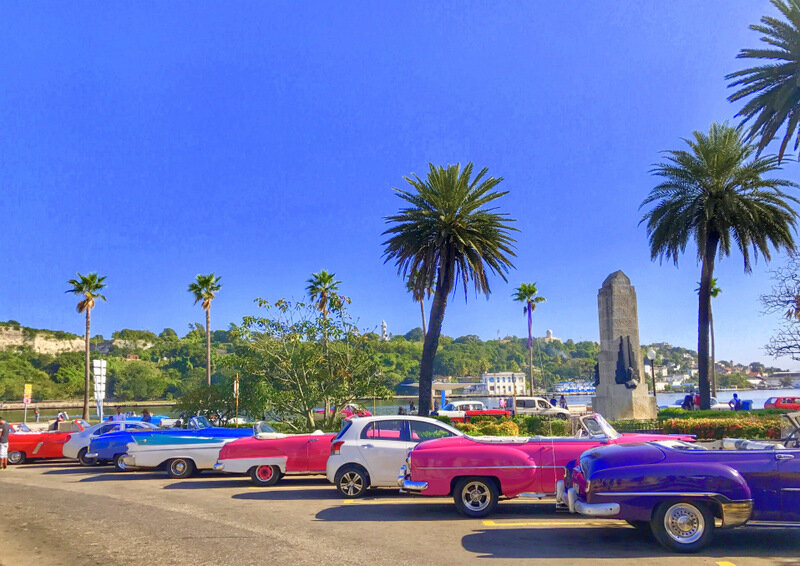 When I found out this past November it was going to be as easy as a good excuse, I mean, (one of twelve) legitimate reasons, and booking a commercial flight for the first time legally from the United States, I was in. I booked the flights from Fort Lauderdale within days of JetBlue’s flight announcements. I didn’t even ask my husband if he wanted to go. We were going!
When I found out this past November it was going to be as easy as a good excuse, I mean, (one of twelve) legitimate reasons, and booking a commercial flight for the first time legally from the United States, I was in. I booked the flights from Fort Lauderdale within days of JetBlue’s flight announcements. I didn’t even ask my husband if he wanted to go. We were going!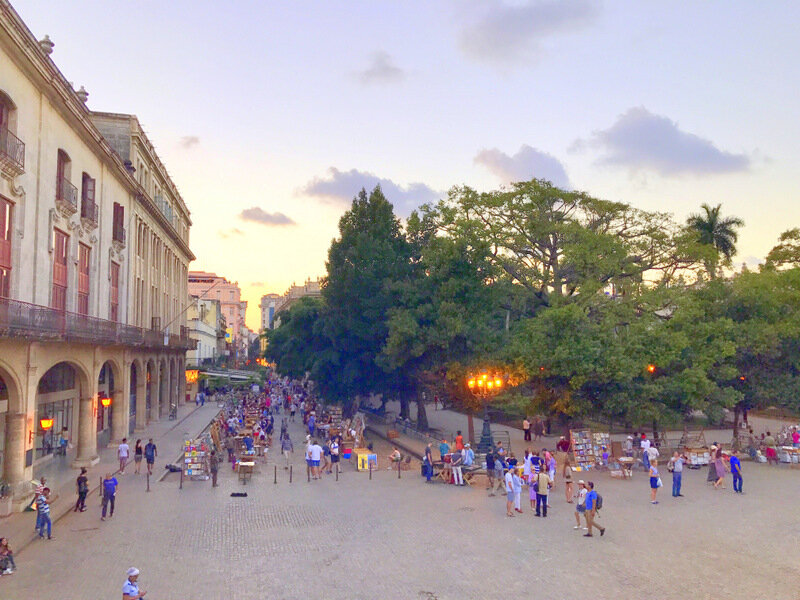 I was glad to go without a travel agent or tour group. The only problem was lack of available accommodations smack dab in between Christmas and New Year’s—holidays obviously celebrated worldwide. Cuba may be the largest Caribbean island (also among the top ten largest island countries in the world), but it is also known for limited accommodations. I’d like to dance around this lightly without sounding like a snob, but basically, most (all) of the hotels are government-owned and operated in Cuba and there are lots of all-inclusive resorts, especially in the out-lying beach areas. Note: I am not an all-inclusive kind of girl. Or am I? Read on to find out…
I was glad to go without a travel agent or tour group. The only problem was lack of available accommodations smack dab in between Christmas and New Year’s—holidays obviously celebrated worldwide. Cuba may be the largest Caribbean island (also among the top ten largest island countries in the world), but it is also known for limited accommodations. I’d like to dance around this lightly without sounding like a snob, but basically, most (all) of the hotels are government-owned and operated in Cuba and there are lots of all-inclusive resorts, especially in the out-lying beach areas. Note: I am not an all-inclusive kind of girl. Or am I? Read on to find out… I’ve been back for weeks now and I can’t stop thinking of Cuba. Maybe it’s because not a day has gone by that I haven’t been asked for details about our trip. This is the hottest ticket around. According to data from Skyscanner, bookings to Cuba from the U.S. went up 450 percent in 2016 and are expected to rise in 2017. When are you going?
I’ve been back for weeks now and I can’t stop thinking of Cuba. Maybe it’s because not a day has gone by that I haven’t been asked for details about our trip. This is the hottest ticket around. According to data from Skyscanner, bookings to Cuba from the U.S. went up 450 percent in 2016 and are expected to rise in 2017. When are you going?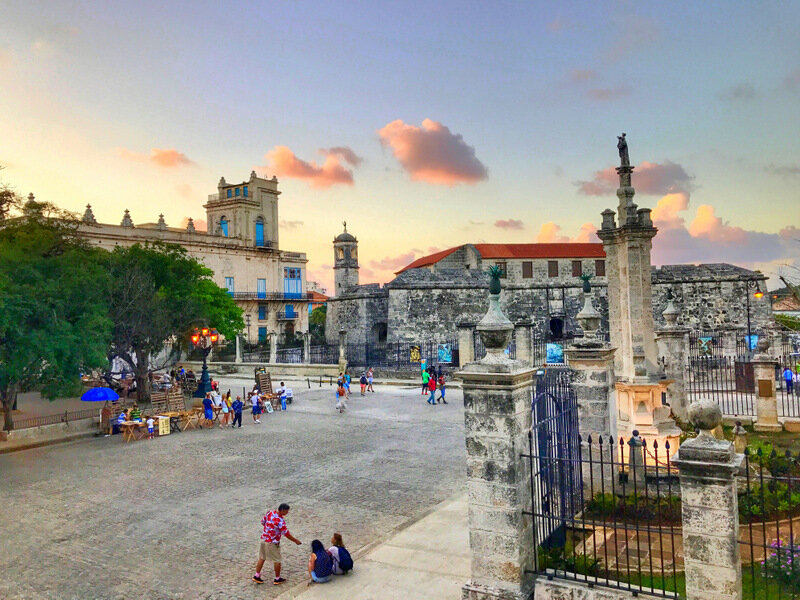 How did we book? Where did we get our visas? What was our “reason”? What to do? Where to go?
How did we book? Where did we get our visas? What was our “reason”? What to do? Where to go?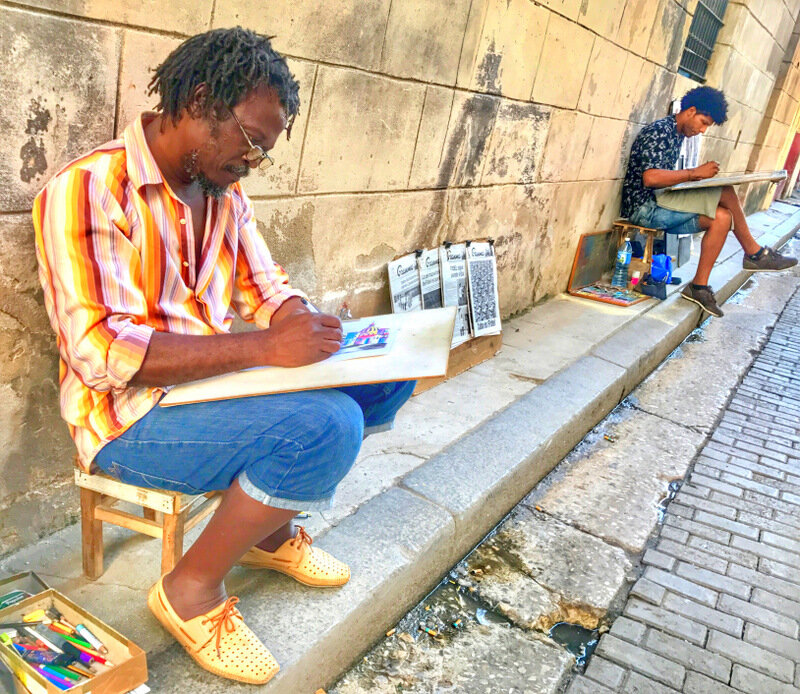 But first, here are just a few more thoughts. We were recently at a friend’s house whose high-end refrigerator broke down after only 15 years. They tried to have it repaired, only to be told they’d have to buy another. I looked at this extra-large, heavy-duty appliance and shook my head. Their refrigerator will end up in a landfill because it wasn’t built to last. Things used to be built to last. Cuba is a visual and psychological testament to this—the old cars and bicycles, vintage appliances, restored buildings and machinery.
But first, here are just a few more thoughts. We were recently at a friend’s house whose high-end refrigerator broke down after only 15 years. They tried to have it repaired, only to be told they’d have to buy another. I looked at this extra-large, heavy-duty appliance and shook my head. Their refrigerator will end up in a landfill because it wasn’t built to last. Things used to be built to last. Cuba is a visual and psychological testament to this—the old cars and bicycles, vintage appliances, restored buildings and machinery.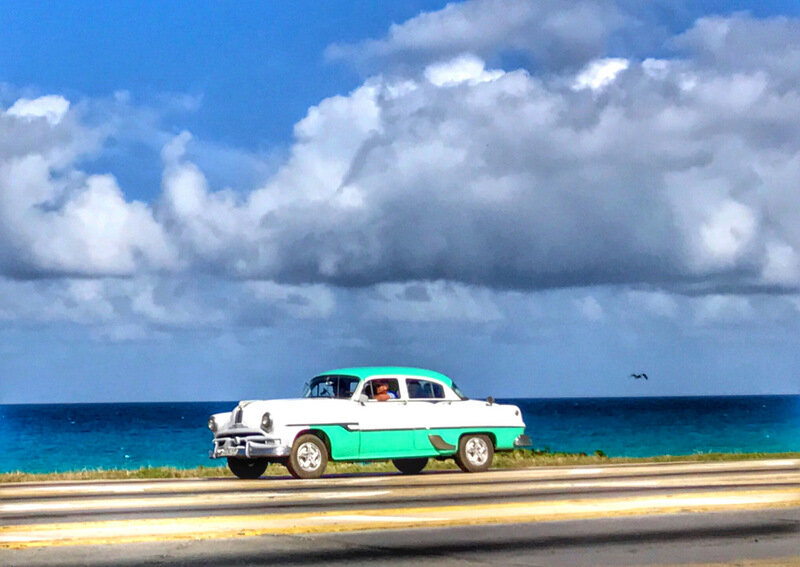 People in the U.S. used to be skilled at fixing things like refrigerators, dishwashers, cars and toilets. It was a point of pride and financial prudence to build things to last. Yet, today, our country is leading the way of disposable everything. We are facing evermore wasteful, land-filling appliances, cars and electronics the world over. Cuba, replete with its vintage cars and crumbling edifices, was a refreshing palette resembling some sort of inadvertent sustainability. We don’t need new everything.
People in the U.S. used to be skilled at fixing things like refrigerators, dishwashers, cars and toilets. It was a point of pride and financial prudence to build things to last. Yet, today, our country is leading the way of disposable everything. We are facing evermore wasteful, land-filling appliances, cars and electronics the world over. Cuba, replete with its vintage cars and crumbling edifices, was a refreshing palette resembling some sort of inadvertent sustainability. We don’t need new everything. When my parents visited Cuba a decade and a half ago they lamented the poverty. The poor, broke down, forsaken people and their lack—that is certainly one lens with which to view this unique, slow-to-grow culture. But, I caution this perspective, as it’s limited and superficial. We all know that time doesn’t stand still. There are brilliant, creative, progressive and forward-thinking people in Cuba just as there are closed-minded, stuck-in-their-old-ways, rigid and unprogressive minds in our country. What I know is only what I felt while I was there—a culturally rich, musically alive, beautiful, yet cautiously emerging culture on the verge of something (hold your breath) American to lurch in.
When my parents visited Cuba a decade and a half ago they lamented the poverty. The poor, broke down, forsaken people and their lack—that is certainly one lens with which to view this unique, slow-to-grow culture. But, I caution this perspective, as it’s limited and superficial. We all know that time doesn’t stand still. There are brilliant, creative, progressive and forward-thinking people in Cuba just as there are closed-minded, stuck-in-their-old-ways, rigid and unprogressive minds in our country. What I know is only what I felt while I was there—a culturally rich, musically alive, beautiful, yet cautiously emerging culture on the verge of something (hold your breath) American to lurch in.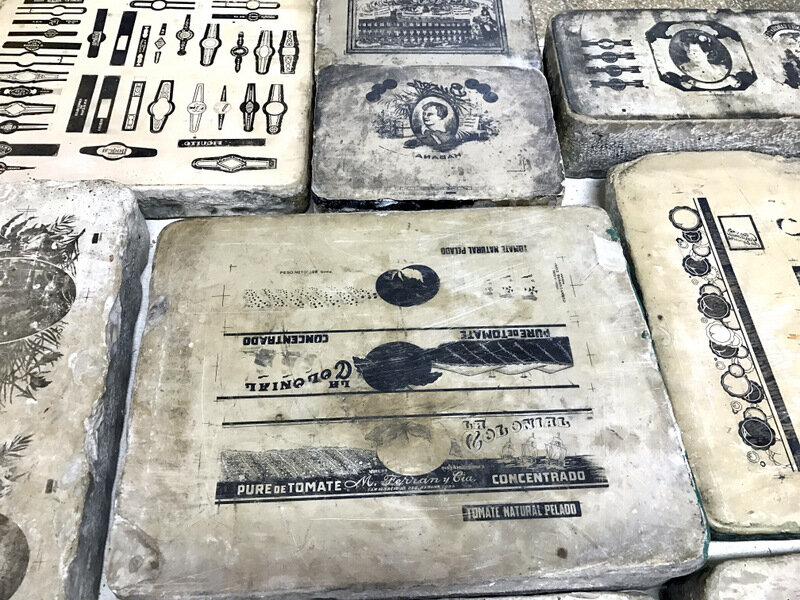 Viewing this culture from the sustainability lens gave me hope and worry at the same time. I keep hearing from people on a daily basis, “I want to see Cuba before it changes too much.” I hope what they mean is taste it, hear it, see it, feel it and appreciate it for what it is, who they are and how it’s been before we Americans get our entitled and greedy little hands all over it. Is it possible to just go and sit and be with the people, share some coffee, dance to some music, puff some cigars and not expect anything in return?
Viewing this culture from the sustainability lens gave me hope and worry at the same time. I keep hearing from people on a daily basis, “I want to see Cuba before it changes too much.” I hope what they mean is taste it, hear it, see it, feel it and appreciate it for what it is, who they are and how it’s been before we Americans get our entitled and greedy little hands all over it. Is it possible to just go and sit and be with the people, share some coffee, dance to some music, puff some cigars and not expect anything in return?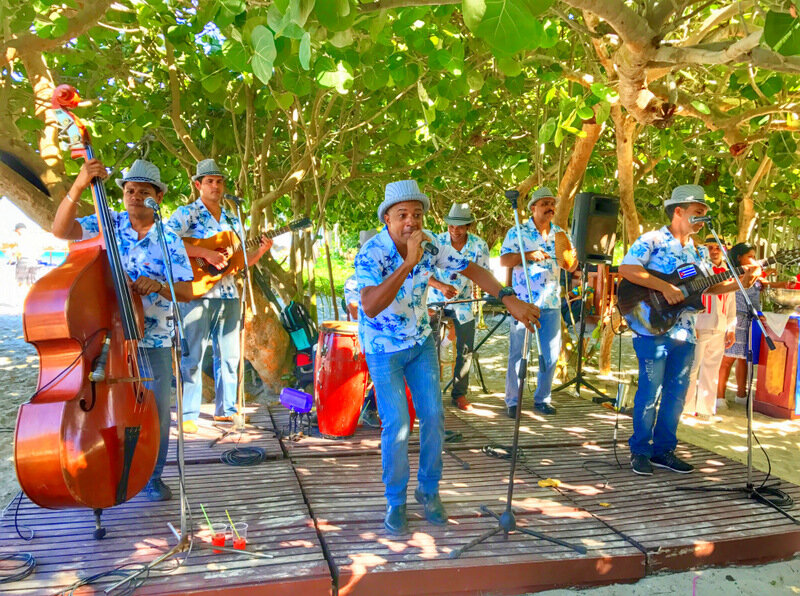 Is it possible to appreciate the old dark wood, the lack of reliable wifi, outdated buildings and slow cars without fixing and replacing? The longevity of material items used, from cars to buildings, clothes, bikes and furniture can teach us a thing or two. We call it up-cycling or re-cycling, they call it survival. Some of us fast-fashion and ADD-minded, consumption-cultured folks may think, “oh how sad for them, they are stuck with these old cars because of their oppressed, unfair and anti-capitalistic leadership.” I know little about the entire history of Cuba, but others certainly feel the pride of staying in their land and living simply. Yuri, a driver I met in Havana spoke with deep pride of the pink ’53 Chevy that his grandfather bequeathed to him. He beamed when he spoke of how it had been cared for and passed down to him to care for it and make his own living. Watching the men attentively wash their bright rides each morning, preparing for the day felt like a meditation and practice much like yoga. Devotion.
Is it possible to appreciate the old dark wood, the lack of reliable wifi, outdated buildings and slow cars without fixing and replacing? The longevity of material items used, from cars to buildings, clothes, bikes and furniture can teach us a thing or two. We call it up-cycling or re-cycling, they call it survival. Some of us fast-fashion and ADD-minded, consumption-cultured folks may think, “oh how sad for them, they are stuck with these old cars because of their oppressed, unfair and anti-capitalistic leadership.” I know little about the entire history of Cuba, but others certainly feel the pride of staying in their land and living simply. Yuri, a driver I met in Havana spoke with deep pride of the pink ’53 Chevy that his grandfather bequeathed to him. He beamed when he spoke of how it had been cared for and passed down to him to care for it and make his own living. Watching the men attentively wash their bright rides each morning, preparing for the day felt like a meditation and practice much like yoga. Devotion.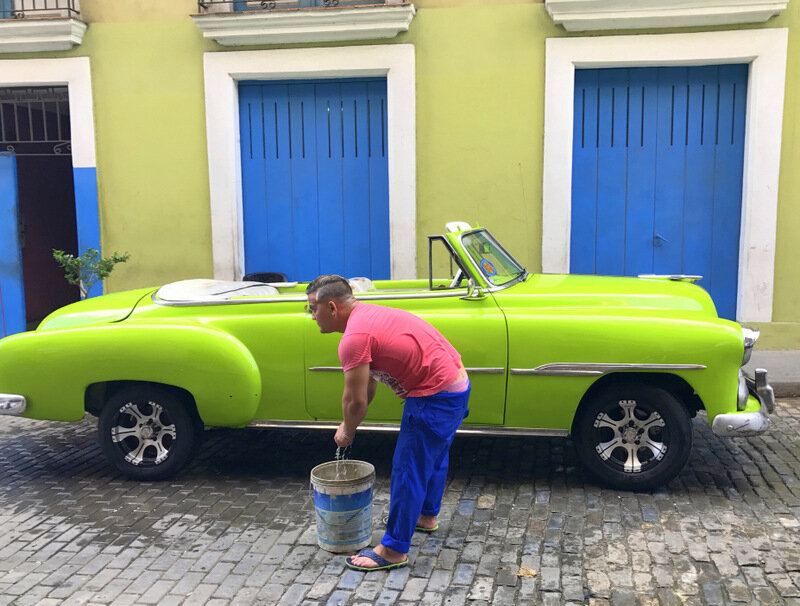 The details:
The details:
There are twelve categories of legal travel to consider and align with for your trip. I am not a travel agent so I am not going to advise which you should choose. We selected number five, “educational activities”. We were personally not asked to expound on anything, backing up why we were traveling and what we did upon arrival back in the U.S.
When you arrive at José Martí International Airport in Havana, you will want to change currency to the CUC. CUC stands for the Cuban Convertible Peso. It is a tourist currency and worth more than the local Cuban Peso (CUP). If you have time, consider bringing Mexican Pesos or Canadian dollars instead of U.S. dollars to change as American currency is charged an additional percentage in the exchange (we brought USD and I think it’s a 10 percent upcharge).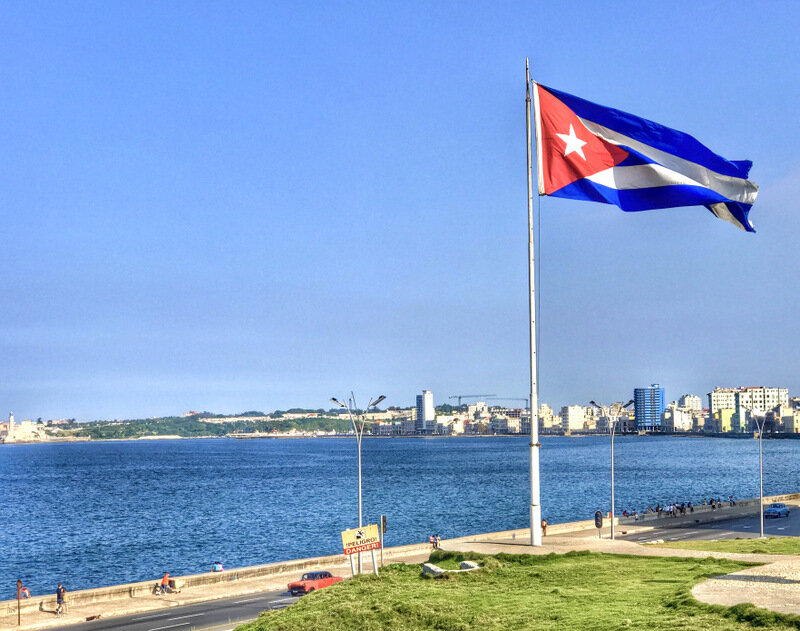
VaraderoFor beautiful beaches, a laid back Caribbean vibe, great music, diving and a chance for kiteboarding if the winds are favorable, head to Varadero. The drive alone is beautiful. We spent two full days in Varadero. It’s only 2 hours from José Martí International Airport in Havana. Although you may feel more comfortable pre-booking your transportation, there are plenty of taxis waiting at the airport that will take you for $80-110USD. We had our large kiteboard travel bags, so we got charged the higher end of that scale.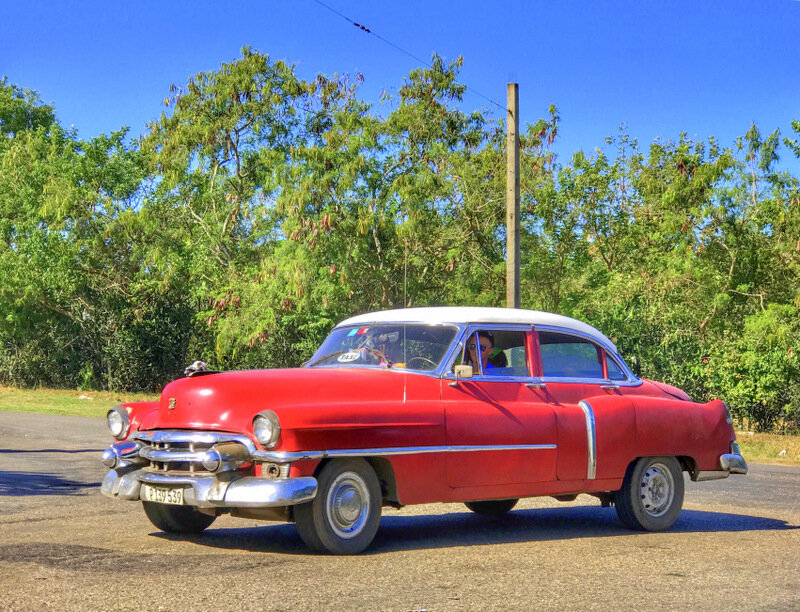
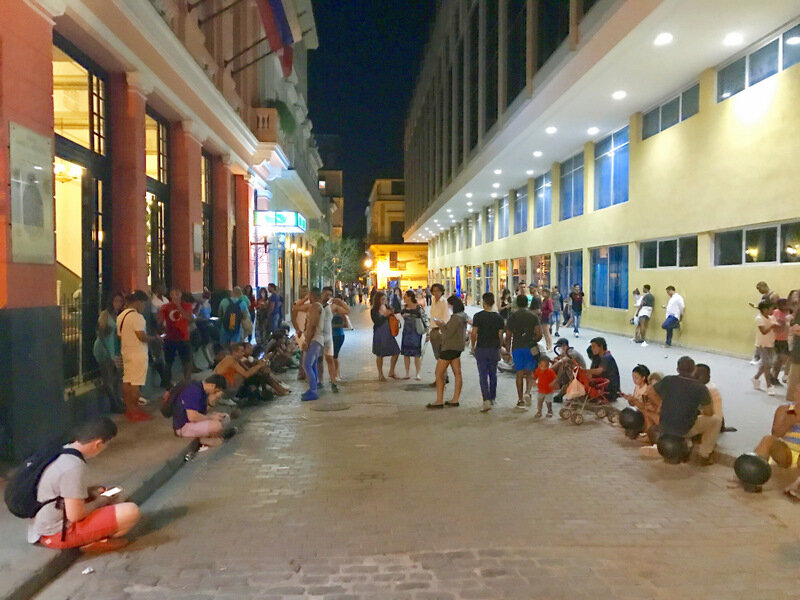 Varadero is known for all-inclusive hotels and some Casa Particulars. There are two types of travel I don’t do, cruises and all-inclusive resorts. Due to our last-minute travel plans we opted for one of the nicer available places, Melia las Americas. Melia hotels are a chain, but we had a blast! I was that person that tried a little bit of everything. I devoured a big breakfast and chased it down with beach yoga. Following yoga, I was just about to sit down to read on a beach lounge chair—I can’t remember the last time I did that—and wait for the wind to come up. The cutest, I mean the cutest, full of personality woman came by declaring it was “aqua gym” time. “Arriba, arriba, time to get your groove on.” She said so, and I was at the pool deck in thirty seconds flat. It was beyond fun. Lea was completely engaging. Following aqua gym we took a sailboat out and after that I had my heart blown open with a killer Cuban band playing a show right on the beach at the bar.
Varadero is known for all-inclusive hotels and some Casa Particulars. There are two types of travel I don’t do, cruises and all-inclusive resorts. Due to our last-minute travel plans we opted for one of the nicer available places, Melia las Americas. Melia hotels are a chain, but we had a blast! I was that person that tried a little bit of everything. I devoured a big breakfast and chased it down with beach yoga. Following yoga, I was just about to sit down to read on a beach lounge chair—I can’t remember the last time I did that—and wait for the wind to come up. The cutest, I mean the cutest, full of personality woman came by declaring it was “aqua gym” time. “Arriba, arriba, time to get your groove on.” She said so, and I was at the pool deck in thirty seconds flat. It was beyond fun. Lea was completely engaging. Following aqua gym we took a sailboat out and after that I had my heart blown open with a killer Cuban band playing a show right on the beach at the bar.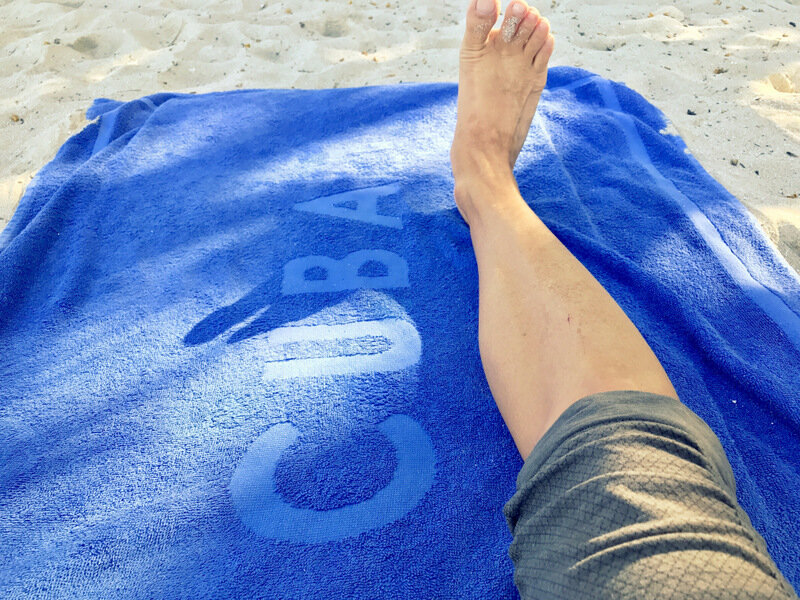 Lea and I spent the rest of the afternoon talking and getting to know each other. I learned that she works six days a week as an entertainer/host and fitness trainer for Melia and sells CDs of local music on the side for $10USD. When I gave her the equivalent of $10 change, she cried. With so much gratitude she explained in perfect English that she is a trained accountant, but can make so much more working for hotels because of the occasional tips she makes. Working almost every day of the month she makes the equivalent of $40USD a month. It’s insane! She is bilingual, talented, beautiful, engaging and intelligent and this is the reality. After our conversation, I learned that tipping is vital for the financial wellbeing of tourist industry employees and spent the rest of the trip dropping the equivalent of $5 and $10 left and right. Just do it. It helps so much and the people are so appreciative.
Lea and I spent the rest of the afternoon talking and getting to know each other. I learned that she works six days a week as an entertainer/host and fitness trainer for Melia and sells CDs of local music on the side for $10USD. When I gave her the equivalent of $10 change, she cried. With so much gratitude she explained in perfect English that she is a trained accountant, but can make so much more working for hotels because of the occasional tips she makes. Working almost every day of the month she makes the equivalent of $40USD a month. It’s insane! She is bilingual, talented, beautiful, engaging and intelligent and this is the reality. After our conversation, I learned that tipping is vital for the financial wellbeing of tourist industry employees and spent the rest of the trip dropping the equivalent of $5 and $10 left and right. Just do it. It helps so much and the people are so appreciative.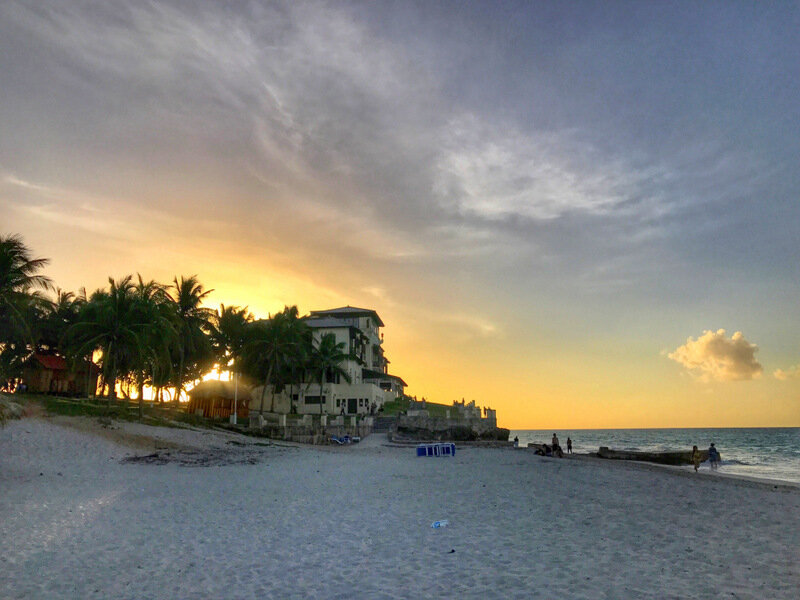 How did I not know that all-inclusive hotels are perfect for can’t-sit-still-for-five-minutes people like me? The best part, though, was not the food. The food and drink was mediocre, especially for vegan foodie snobs, like us, but we managed to make do with simple beans, rice and other fresh fruits. It was not avocado season—the horror. The Cuban-run beverage company, Ciego Monteneros runs the show and their “cola” was gross, in my opinion. If you’re a die-hard Coca-cola fan you’ll likely not want any part of this flavor, but there was something refreshing about not seeing Coke© products everywhere. Varadero is tranquil, with plenty to do, beautiful waters and great views. We stayed right next to the DuPont mansion, which overlooks cliffs, a perfect sunset and a (so-they-say) golf course.
How did I not know that all-inclusive hotels are perfect for can’t-sit-still-for-five-minutes people like me? The best part, though, was not the food. The food and drink was mediocre, especially for vegan foodie snobs, like us, but we managed to make do with simple beans, rice and other fresh fruits. It was not avocado season—the horror. The Cuban-run beverage company, Ciego Monteneros runs the show and their “cola” was gross, in my opinion. If you’re a die-hard Coca-cola fan you’ll likely not want any part of this flavor, but there was something refreshing about not seeing Coke© products everywhere. Varadero is tranquil, with plenty to do, beautiful waters and great views. We stayed right next to the DuPont mansion, which overlooks cliffs, a perfect sunset and a (so-they-say) golf course.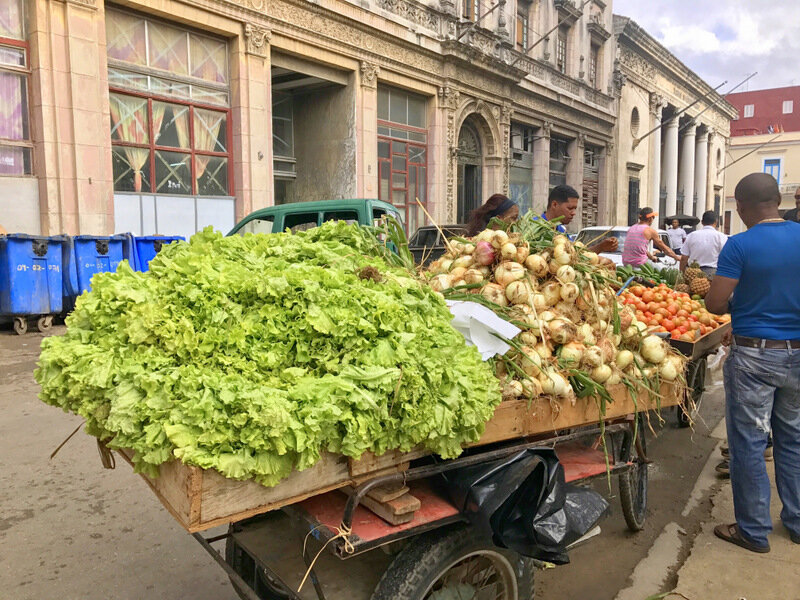 MusicThe Buena Vista Social Club was a famous group of Cuban musicians for many decades. There are albums and a documentary about them. While most have passed away, there are a few of the original band members that have started a side project called the Orquesta Cuban Soneros All Stars. You can see them in Varadero at a not-so-sexy concert hall (the venue is boring and in a touristy shopping area), but the music is epic. They play two nights a week in Varadero and two alternate nights a week in Havana. Look them up.
MusicThe Buena Vista Social Club was a famous group of Cuban musicians for many decades. There are albums and a documentary about them. While most have passed away, there are a few of the original band members that have started a side project called the Orquesta Cuban Soneros All Stars. You can see them in Varadero at a not-so-sexy concert hall (the venue is boring and in a touristy shopping area), but the music is epic. They play two nights a week in Varadero and two alternate nights a week in Havana. Look them up.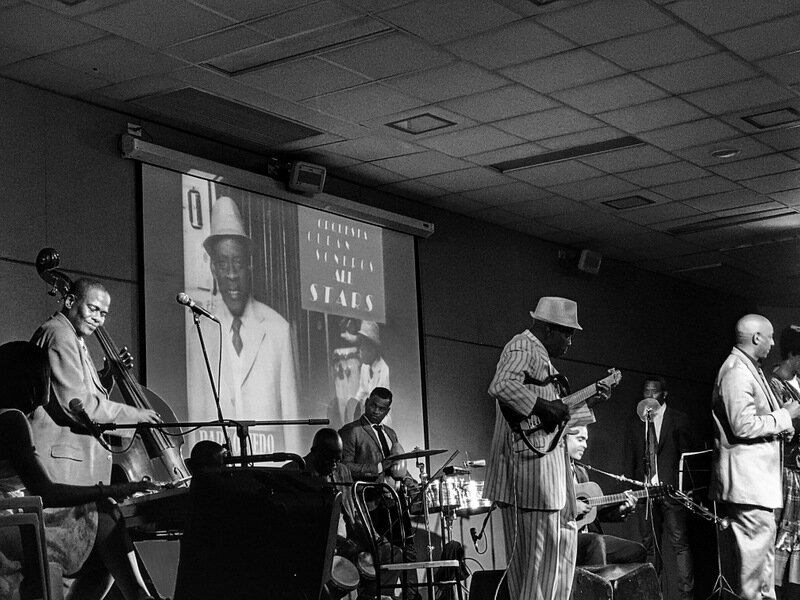 AdventureWe heard there are a lot of diving and snorkeling day trips, as well as tours to waterfalls and rivers. A good thing about Castro was his respect for and protection of reefs. I hear the diving is quite good. There is a kiteboarding school in Varadero. We didn’t visit it as we are self-sufficient and just put our kites up off the resort, but it’s always a good idea to get to know the local kite-school operators to get advice on the waters and hazards for a safe adventure.
AdventureWe heard there are a lot of diving and snorkeling day trips, as well as tours to waterfalls and rivers. A good thing about Castro was his respect for and protection of reefs. I hear the diving is quite good. There is a kiteboarding school in Varadero. We didn’t visit it as we are self-sufficient and just put our kites up off the resort, but it’s always a good idea to get to know the local kite-school operators to get advice on the waters and hazards for a safe adventure.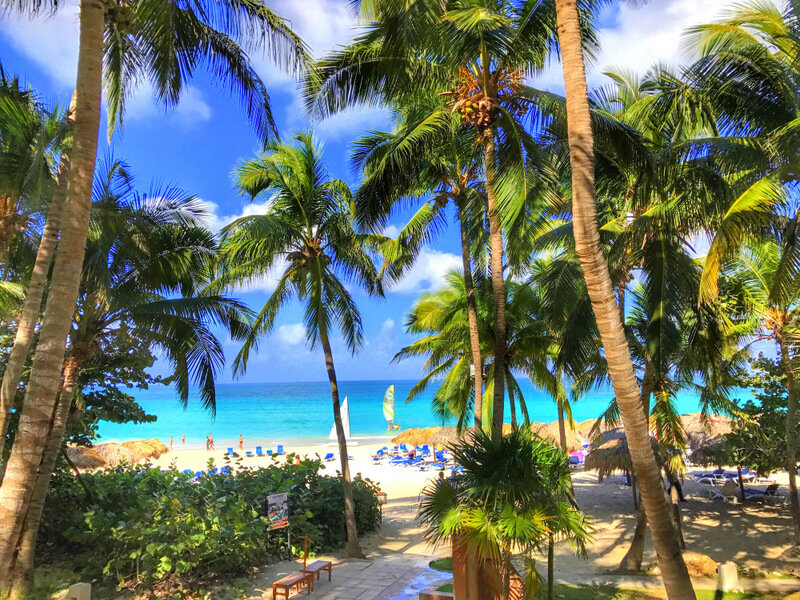 HavanaI am not going to even pretend to be an expert here. We were only in the city for two days, but of course we saw and ate our way through plenty. Check out Damien Cave’s New York Times article linked below. It’s spot on.
HavanaI am not going to even pretend to be an expert here. We were only in the city for two days, but of course we saw and ate our way through plenty. Check out Damien Cave’s New York Times article linked below. It’s spot on.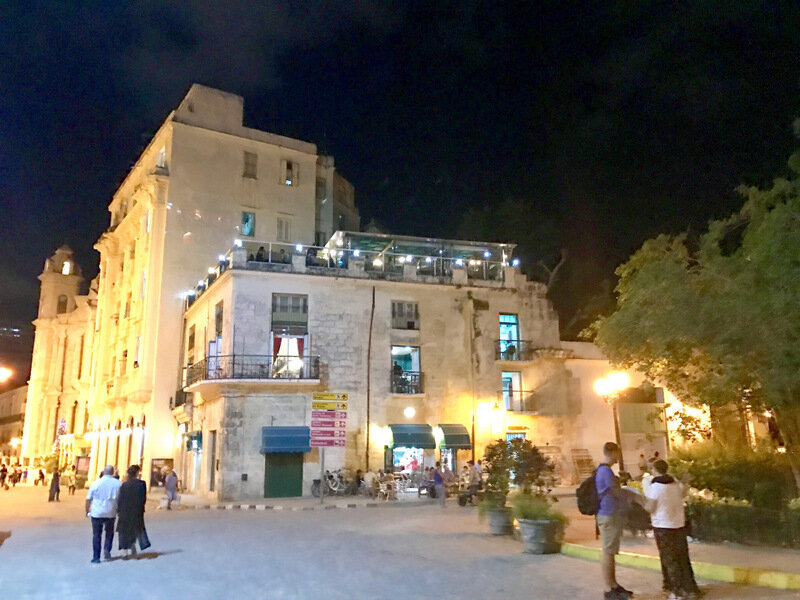 You will see some hotel recommendations in the New York Times article; be sure to consult Trip Advisor, as well, if that’s your thing. We stayed at Hotel Santa Isabel, a restored 27-room mansion overlooking the Plaza de Armas. The staff was incredible, the breakfast (included) was good and the views and vibe was great! We had (one of two) lunches at La Barraca, an historic, open-air restaurant on the front grounds of Hotel Nacional with great views and decent food, but I wouldn’t want to stay there. It’s huge, impersonal and flooded with tourists wandering the lobby and grounds. I preferred to stay right in the heart of old-town to wander the alleys, side streets and follow the sounds of music pouring from bars and cafes like Café de Paris and La Bodequita del Medio.
You will see some hotel recommendations in the New York Times article; be sure to consult Trip Advisor, as well, if that’s your thing. We stayed at Hotel Santa Isabel, a restored 27-room mansion overlooking the Plaza de Armas. The staff was incredible, the breakfast (included) was good and the views and vibe was great! We had (one of two) lunches at La Barraca, an historic, open-air restaurant on the front grounds of Hotel Nacional with great views and decent food, but I wouldn’t want to stay there. It’s huge, impersonal and flooded with tourists wandering the lobby and grounds. I preferred to stay right in the heart of old-town to wander the alleys, side streets and follow the sounds of music pouring from bars and cafes like Café de Paris and La Bodequita del Medio.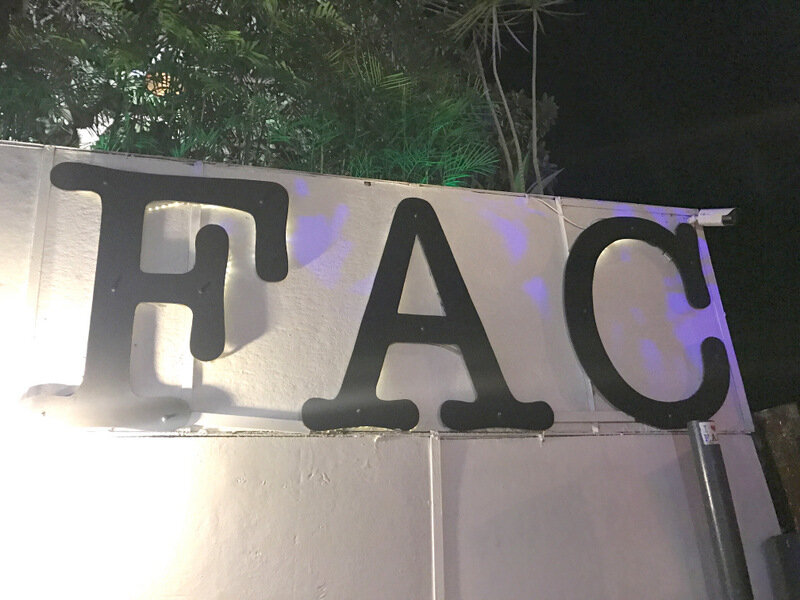 You have probably heard about the Fábrica de Arte Cubano (FAC) by now. As one of the coolest and creative art collectives in North America, it’s a must see. I don’t want to give too much away, but think innovative dance, theatre and art coupled with funky lounge spaces to drink. You imagine Lenny Kravitz is going to walk into the room at any minute. It’s people and art watching at its best! The upside is that it’s inexpensive, but the downside is this accessibility makes for long lines to enter. Expect a hundred people in front of you any time after 9pm. Go early to grab a bite at La Cocinero (reservations a must) or at the café right in the FAC when it opens at 8pm or plan to go much later. We arrived at 8:45pm and the line only took twenty minutes. Make conversation with fellow line-goers and enjoy immensely.
You have probably heard about the Fábrica de Arte Cubano (FAC) by now. As one of the coolest and creative art collectives in North America, it’s a must see. I don’t want to give too much away, but think innovative dance, theatre and art coupled with funky lounge spaces to drink. You imagine Lenny Kravitz is going to walk into the room at any minute. It’s people and art watching at its best! The upside is that it’s inexpensive, but the downside is this accessibility makes for long lines to enter. Expect a hundred people in front of you any time after 9pm. Go early to grab a bite at La Cocinero (reservations a must) or at the café right in the FAC when it opens at 8pm or plan to go much later. We arrived at 8:45pm and the line only took twenty minutes. Make conversation with fellow line-goers and enjoy immensely.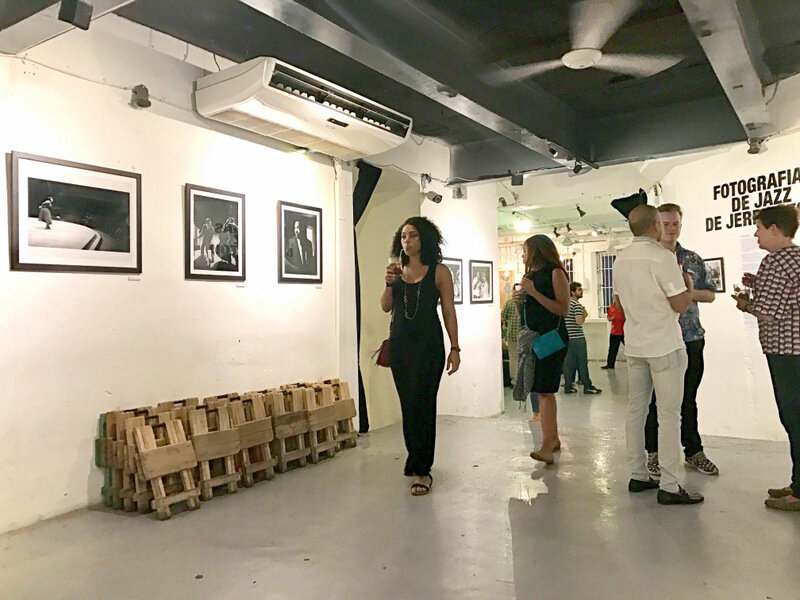 While at the FAC, purchase a Guía Clandestina de la Havana (guide) in one of the little galleries on the ground level. It’s a few dollars and worth checking out all the coolest art galleries, restaurants, cafes, jazz and music clubs and shops in Vedado, Central Havana and Old Havana. It’s all in Spanish, but the map is great and easy to follow. Check them out at @ClandestinaCuba.
While at the FAC, purchase a Guía Clandestina de la Havana (guide) in one of the little galleries on the ground level. It’s a few dollars and worth checking out all the coolest art galleries, restaurants, cafes, jazz and music clubs and shops in Vedado, Central Havana and Old Havana. It’s all in Spanish, but the map is great and easy to follow. Check them out at @ClandestinaCuba.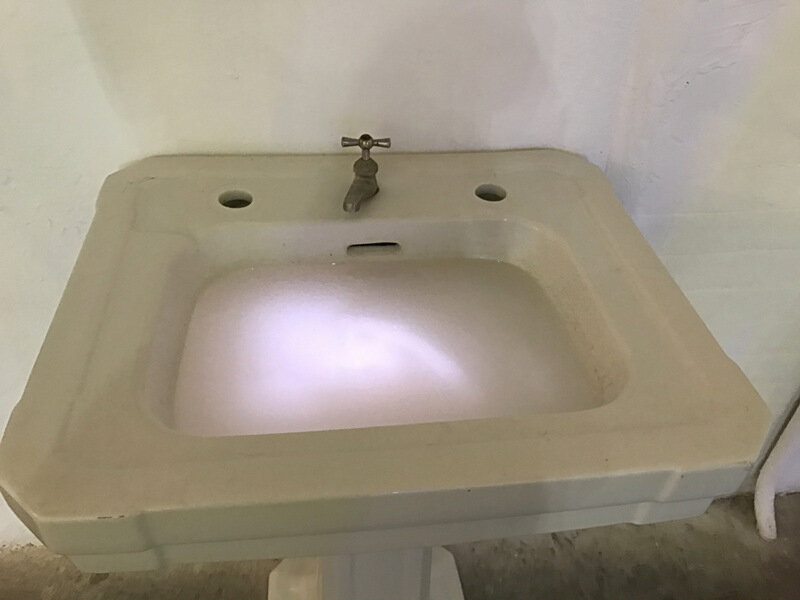 Havana food and drinkAs mentioned above, grab the Guía Clandestina and read 36 Hours in Havana in the New York Times by Damien Cave.
Havana food and drinkAs mentioned above, grab the Guía Clandestina and read 36 Hours in Havana in the New York Times by Damien Cave. Just off the Plaza Catedral is Callejon you will find the Taller Experimental de Grafica de la Havana and a handful of cute cafes. The artist space has been in use since 1962. Today it houses curated graphic art, a gallery and workspace for artists. I had a great salad and espresso at Esto no es Un Café. Dona Eutimia is highly recommended but was already booked for lunch by 11:30am. It’s worth having your hotel or guide call some of the following (most recommended) places or stop by to reserve: Havana 61, Ivan Justo and Al Carbon (sister restaurants, love them, GO!), El Litoral, La Guarida, Rio Mar and O'Reilly 304. While not my favorite food, La Moneda Cubana has great views and an interesting history. Beyonce and Jay Z also ate there on their visit, if you care about those things.
Just off the Plaza Catedral is Callejon you will find the Taller Experimental de Grafica de la Havana and a handful of cute cafes. The artist space has been in use since 1962. Today it houses curated graphic art, a gallery and workspace for artists. I had a great salad and espresso at Esto no es Un Café. Dona Eutimia is highly recommended but was already booked for lunch by 11:30am. It’s worth having your hotel or guide call some of the following (most recommended) places or stop by to reserve: Havana 61, Ivan Justo and Al Carbon (sister restaurants, love them, GO!), El Litoral, La Guarida, Rio Mar and O'Reilly 304. While not my favorite food, La Moneda Cubana has great views and an interesting history. Beyonce and Jay Z also ate there on their visit, if you care about those things. Vegan alert: the hotel we stayed at in Varadero gave us a carton of soy milk which augmented our many Cuban coffees for the trip. Alternative milks are hard to come by in Cuba, so bring your own if you want it. One great vegan option for breakfast, coffee and lunch is el Café. Great smoothies, coffee drinks and vegetarian options like local-inspired hummus and salads. It gets packed, so get there early or on off-times. It’s open 9-6 daily.
Vegan alert: the hotel we stayed at in Varadero gave us a carton of soy milk which augmented our many Cuban coffees for the trip. Alternative milks are hard to come by in Cuba, so bring your own if you want it. One great vegan option for breakfast, coffee and lunch is el Café. Great smoothies, coffee drinks and vegetarian options like local-inspired hummus and salads. It gets packed, so get there early or on off-times. It’s open 9-6 daily.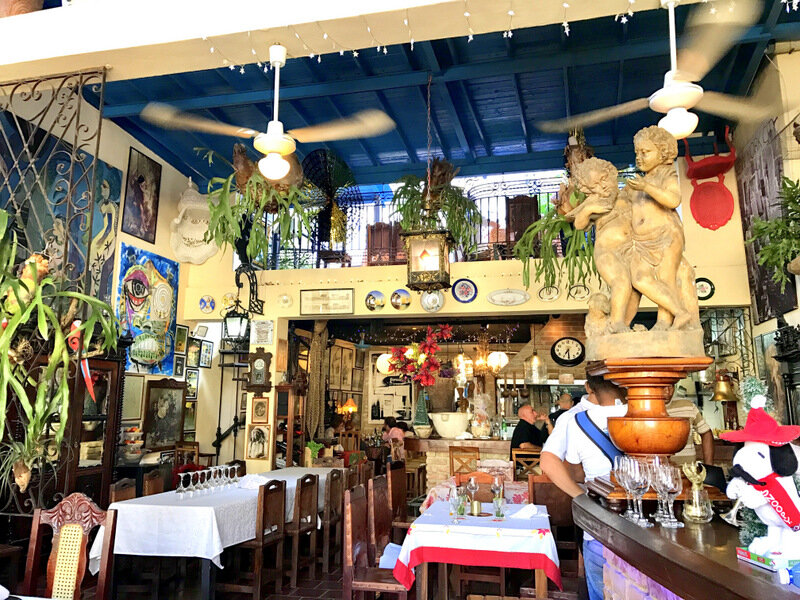 When it’s (sadly) time to leave Cuba, be sure to know from which terminal you fly out. The terminals are misleading (not a part of one building as one would think). They are in completely different locations from one another and can take 5-10 minutes to drive between them. We were told the wrong terminal upon our departure and cut it very close. The lines leaving Havana can be long, as the American airline staff are new to the area and still in set up mode for the next couple of months. Plan at least 40 minutes from downtown Havana to the airport. You can really flag down your own taxi on any main driving road. We had the hotel call and it made us late.I always recommend leaving a good portion of a trip unplanned and open for kismet. Do this in Havana. Wander slowly. Let your senses move you and guide you. Definitely hit the hot spots like Fabrica de Arte Cubana, la Plaza de Catedral, la plaza de Armas, the Malecón and the Havana forest; then sit, sip, savor and by all means, shake your groove thing to those Cuban rhythms.
When it’s (sadly) time to leave Cuba, be sure to know from which terminal you fly out. The terminals are misleading (not a part of one building as one would think). They are in completely different locations from one another and can take 5-10 minutes to drive between them. We were told the wrong terminal upon our departure and cut it very close. The lines leaving Havana can be long, as the American airline staff are new to the area and still in set up mode for the next couple of months. Plan at least 40 minutes from downtown Havana to the airport. You can really flag down your own taxi on any main driving road. We had the hotel call and it made us late.I always recommend leaving a good portion of a trip unplanned and open for kismet. Do this in Havana. Wander slowly. Let your senses move you and guide you. Definitely hit the hot spots like Fabrica de Arte Cubana, la Plaza de Catedral, la plaza de Armas, the Malecón and the Havana forest; then sit, sip, savor and by all means, shake your groove thing to those Cuban rhythms.

